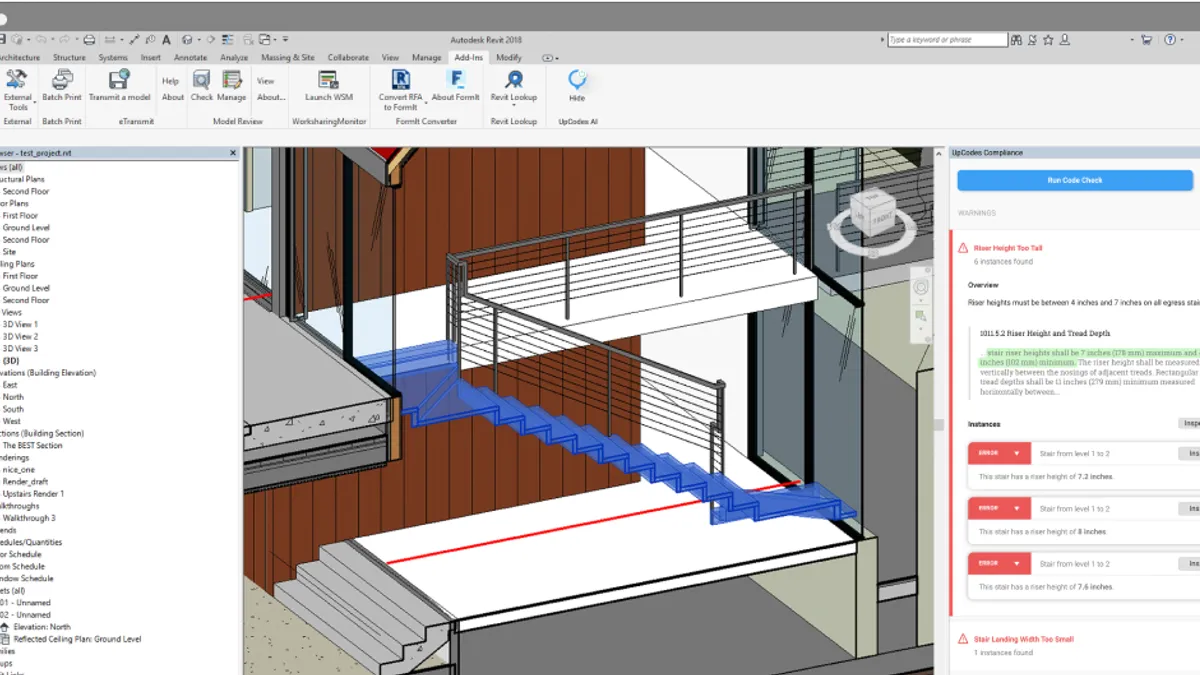Dive Brief:
- San Francisco-based startup UpCodes this month launched UpCodes AI, a software plug-in which uses artificial intelligence to run a “spell check” on a BIM model’s code compliance by flagging violations, TechCrunch reported.
- Because building codes are frequently updated and amended, new requirements can be missed by architects, leading to costly project delays. CEO Scott Reynolds said the beta product identifies an average of 27 code violations per project.
- UpCodes AI uses natural language processing, which helps computers understand human writing, to draw from the company’s database of regulations from 26 states and the District of Columbia, which is reportedly updated in near real-time. The program is compatible with Autodesk Revit and will integrate with ArchiCad, SketchUp and IFC in the future, according to TechCrunch.
Dive Insight:
Building codes are sometimes called “living documents” because of the relatively frequent changes municipalities make to accessibility, fire safety and other requirements. Staying on top of these updates and revisiting designs to ensure compliance can take up much of an architect’s time. And on the chance that any violations are missed in the design phase, contractors could be looking at rework and project delays.
Stringent code regulations already pile expenses on construction projects. According to the National Association of Home Builders, government regulations add $84,671 to the price of a new single-family home, on average. In addition, a McKinsey report found that regulations associated with land acquisition, zoning and building codes can add inefficiencies to construction projects and drain productivity.
AI can remove some of the compliance hassles from the equation. The technology has been adopted by the financial services industry to pore through huge amounts of data and flag any signs of illicit transactions, for example. And by adopting algorithms in use by industries ranging from healthcare to pharmaceutical, construction can expect to see an improvement in cost savings, risk management and workflow efficiency.











